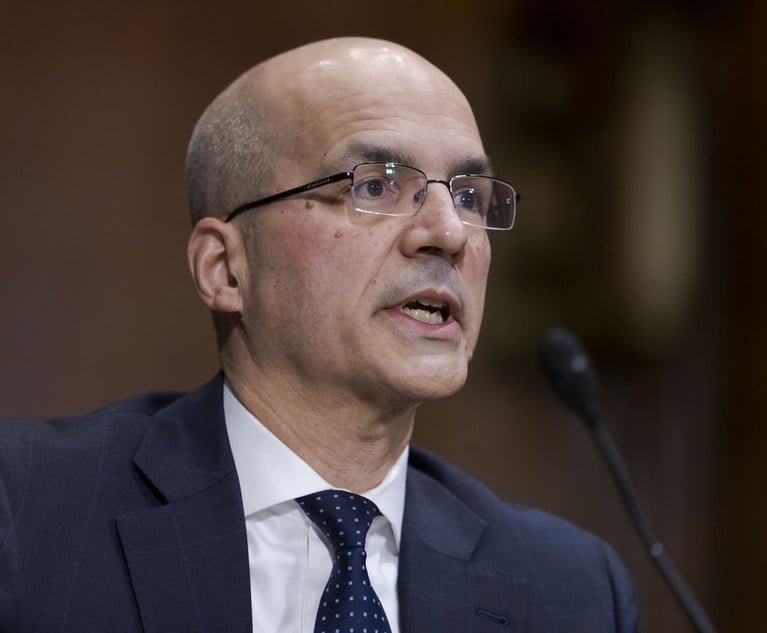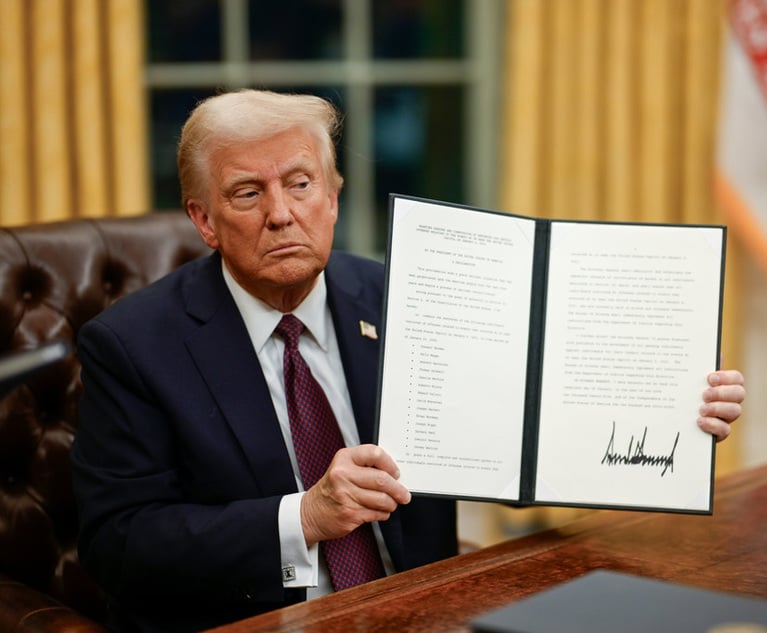When Drafting a Pleading Against Your Insurer in New York, Consider Consequential Damages
Now, more than ever, policyholders should evaluate whether they have a claim for consequential damages when drafting a pleading against a breaching insurer.
June 25, 2019 at 11:45 AM
9 minute read
 peshkova – Fotolia
peshkova – Fotolia
For the past decade, the New York Court of Appeals decision in Bi-Economy Market, Inc. v. Harleysville Insurance Company of New York, has served as a useful roadmap for policyholders looking to recover consequential damages in connection with claims brought against their insurers who they allege have wrongfully denied their claim. See, e.g., D.K. Property v. National Union Fire Insurance Company of Pittsburgh, Pa., 92 N.Y.S.3d 231 (1st Dep't 2019) (citing Bi-Economy). This past January, in D.K. Property, the First Department emphasized that the key inquiry in such cases—if not the only inquiry—is whether the consequential damages being sought were foreseeable at the time of contracting. Against that backdrop, now, more than ever, policyholders should evaluate whether they have a claim for consequential damages when drafting a pleading against a breaching insurer.
Bi-Economy—the seminal case on this issue—involved a claim brought by a policyholder who alleged that it was entitled to consequential damages as a result of its insurer's improper denial of, and delay in providing, property damage and business interruption coverage for damage caused to the insured's facility by a fire. 10 N.Y.3d at 187-190. The policyholder further alleged that its insurer's inaction ultimately led to the collapse of its business. Id. The insurer successfully moved at summary judgment to dismiss the policyholder's plea for consequential damages because “the insurance policy expressly excluded coverage for consequential losses, and thus it cannot be said that consequential damages were contemplated by the parties when the contract was formed.” Id. at 192. The Fourth Department affirmed the dismissal. Id.
The Court of Appeals reversed. Id. Taking a cue from the age-old decision in Hadley v. Baxendale, the court held that the breaching party “is liable for those risks foreseen or which should have been foreseen at the time the contract was made.” 10 N.Y.3d at 192-93. Although the insurer in Bi-Economy argued that the collapse of the insured's business was not the foreseeable result of its denial of coverage and relied heavily on the policy's consequential loss exclusion, the court nonetheless found that the insured had a viable claim for consequential damages. Id. at 196. The court found that the policy's consequential loss exclusion precluded coverage of consequential loss under the policy, and did not bar consequential loss claims against the insurer for breaching the policy. Id. Further, the court found that the very nature and purpose of the policy—to receive coverage promptly in the wake of a covered event so that the business could “get back on its feet as soon as possible”—was enough to satisfy the foreseeability element required to sustain the insured's claim. Id. at 195.
Eleven years later, in D.K. Property, the New York Appellate Division First Department, citing Bi-Economy, held that consequential damages are recoverable “if such damages (or risks) were foreseen or should have been foreseen when the contract was made.” 92 N.Y.S.3d 231, 233. There, the policyholder filed a claim with its insurer because its building began to shift and crack due to construction in an adjoining building. Id. at 232. Just as in Bi-Economy, the insurer in D.K. Property delayed coverage. Id. at 232-33. Without such coverage, the policyholder was unable to take corrective actions necessary to prevent the building from falling into further disrepair. Id. Accordingly, the policyholder sought consequential damages associated with the insurer's delays—including engineering costs, costs associated with painting, repairs, monitoring equipment, moisture abatement, loss of rents, and other expenses. Id. at 233.
The insurer in D.K. Property promptly moved to dismiss the policyholder's prayer for consequential damages, arguing that its allegations were “conclusory,” and that consequential damages “were not reasonably contemplated … at the time they entered into the Policy.” 74 N.Y.S.3d 469, 473 (Sup. Ct. N.Y. Cty. April 2, 2018). The trial court granted the insurer's motion and dismissed the policyholder's claim. Id. at 473-74.
The First Department reversed, concluding that the insured's obligation to “take all reasonable steps” to protect its insured from further losses “supports [policyholder's] allegation that some or all the alleged damages were foreseeable,” rendering dismissal on the pleadings inappropriate. 92 N.Y.S.3d at 233-34. The First Department added that, “there is no heightened pleading standard requiring plaintiff to explain or describe how and why the 'specific' categories of consequential damages alleged were reasonable and foreseeable at the time of contract.” Id. at 233.
In the years since Bi-Economy, New York courts have examined countless cases involving claims for insurance coverage under property damage and business interruption policies for which consequential damages were sought—D.K. Property is but one example. See, e.g., Tiffany Tower Condo. v. Ins. Co. of Greater New York, 84 N.Y.S.3d 167, 170 (2d Dep't 2018) (finding that “plaintiffs stated a viable cause of action to recover consequential damages based on [Bi-Economy]”); 99 Wall Dev. v. Allied World Specialty Ins. Co., No. 18-CV-126, 2019 WL 2150663, at *2 (S.D.N.Y. May 17, 2019) (citing Bi-Economy and holding that policyholder “adequately alleged consequential damages”). Bi-Economy and D.K. Property make clear that the key inquiry in such cases is whether the consequential damages being sought were foreseeable at the time of contracting.
But the question of whether the damages being sought are foreseeable should not be restricted to cases involving property damage or business interruption insurance. Instead, policyholders should consider seeking consequential damages with respect to any claims for breach of an insurance policy—regardless of the type of insurance involved—so long as the policyholder can plausibly allege that such damages were foreseeable at the time contracting.
Numerous cases decided outside of New York bear this out. For example, in Century Surety Company v. Andrew, the Nevada Supreme Court found that an insurer's breach of its duty to defend under a commercial general liability policy could give rise to a claim for consequential damages for the amount of a judgment or settlement as well the attorney fees and costs incurred in defending a suit, as long as the insured could demonstrate that such damages “naturally resulted from the breach.” 134 Nev. Adv. Op. 100 (2018). (For a full analysis of Century Surety Company v. Andrew, see Daniel Epstein and Brian Scarbrough's recent article titled “Consequential Damages Can Exceed Policy Limits in Nevada,” Law360 (Feb. 4, 2019).)
In Heller International v. Sharp, a federal court sitting in Illinois held that a policyholder could recover “reasonably foreseeable” consequential damages flowing from a breach of a $10 million fidelity bond. 839 F. Supp. 1297, 1305 (E.D. Ill. 1993). There, the policyholder sought $10 million plus interest in consequential damages—representing the amount the insured was forced to borrow as a result of its insurer's refusal to act on the bond. Id. at 1300. The Sharp court found such damages could be recovered, since “a fidelity bond is designed to replace money lost,” and if the insurers refused to pay, “the need for an alternate source of funds would be within the contemplation of the parties.” Id. at 1305.
In Bainbridge v. Travelers Casualty Company of Connecticut, the Colorado Court of Appeals held that a policyholder could recover consequential damages suffered as a result of an insurer's breach of the duty to defend under a commercial general liability policy. 159 P.3d 748, 756 (Colo. Ct. App. 2006). Notably, the Travelers court stated that a finding of tort liability was not a prerequisite for the recovery of consequential damages in insurance coverage cases. Rather, the policyholder need only prove that such damages were “reasonably foreseeable at the time of contract[ing].” Id.; see, e.g., Rockford Mutual Ins. Co. v. Pirtle, 911 N.E.2d 60, 68 (Ill. Ct. App. 2009) (rejecting insurer's “argument that consequential damages were erroneously awarded because the dispute was a good faith dispute”); No Limit Clothing v. Allstate Ins. Co., No. 09-13574, 2011 WL 96869, at *5 (E.D. Mich. 2011) (holding that “a breaching party's good or bad faith is immaterial with respect to the availability of consequential damages”); Machan v. Unum Life Ins. Co. of America, 116 P.3d 342, 346 (Utah 2005) (deciding that consequential damages are available if “the company has breached the express terms of the contract”).
Similarly, in A.S.A Produce Company v. Everest National Insurance Co., a California federal court held that “consequential damages are available in contract claims if those damages were foreseeable when the contract was made.” No. 06-3268, 2006 WL 8440500, at *2 (C.D. Cal. 2006). There, the policyholder sought consequential damages in the amount of increased insurance premiums allegedly caused by defendant-insurer's mishandling of a worker's compensation claim. Id. The court found such damages were not “unforeseeable as a matter of law,” since the policyholder alleged the defendant-insurer “improperly handled the worker's compensation claim, the claim was overpaid, and as a result, [policyholder's] insurance premium was raised.” Id.
These cases confirm that in the years since Hadley v. Baxendale was decided, consequential damages have been available to policyholders litigating against their breaching insurer—even where the policy at issue contains an exclusion for consequential losses. Regardless of whether a policy contains such an exclusion, the availability of consequential damages ultimately depends on whether the damages being sought were foreseeable at the time of contracting. Thus, policyholders should always evaluate whether they have a claim for consequential damages when drafting a pleading against their insurer.
Greg Van Houten is an associate, Barry Buchman and Jonathan Pressment are partners, at Haynes and Boone. Andrea Levenson, an associate at the firm, assisted in the preparation of this article.
This content has been archived. It is available through our partners, LexisNexis® and Bloomberg Law.
To view this content, please continue to their sites.
Not a Lexis Subscriber?
Subscribe Now
Not a Bloomberg Law Subscriber?
Subscribe Now
NOT FOR REPRINT
© 2025 ALM Global, LLC, All Rights Reserved. Request academic re-use from www.copyright.com. All other uses, submit a request to [email protected]. For more information visit Asset & Logo Licensing.
You Might Like
View All
'Serious Legal Errors'?: Rival League May Appeal Following Dismissal of Soccer Antitrust Case
6 minute read
How Some Elite Law Firms Are Growing Equity Partner Ranks Faster Than Others
4 minute read
Trending Stories
- 1Thursday Newspaper
- 2Public Notices/Calendars
- 3Judicial Ethics Opinion 24-117
- 4Rejuvenation of a Sharp Employer Non-Compete Tool: Delaware Supreme Court Reinvigorates the Employee Choice Doctrine
- 5Mastering Litigation in New York’s Commercial Division Part V, Leave It to the Experts: Expert Discovery in the New York Commercial Division
Who Got The Work
J. Brugh Lower of Gibbons has entered an appearance for industrial equipment supplier Devco Corporation in a pending trademark infringement lawsuit. The suit, accusing the defendant of selling knock-off Graco products, was filed Dec. 18 in New Jersey District Court by Rivkin Radler on behalf of Graco Inc. and Graco Minnesota. The case, assigned to U.S. District Judge Zahid N. Quraishi, is 3:24-cv-11294, Graco Inc. et al v. Devco Corporation.
Who Got The Work
Rebecca Maller-Stein and Kent A. Yalowitz of Arnold & Porter Kaye Scholer have entered their appearances for Hanaco Venture Capital and its executives, Lior Prosor and David Frankel, in a pending securities lawsuit. The action, filed on Dec. 24 in New York Southern District Court by Zell, Aron & Co. on behalf of Goldeneye Advisors, accuses the defendants of negligently and fraudulently managing the plaintiff's $1 million investment. The case, assigned to U.S. District Judge Vernon S. Broderick, is 1:24-cv-09918, Goldeneye Advisors, LLC v. Hanaco Venture Capital, Ltd. et al.
Who Got The Work
Attorneys from A&O Shearman has stepped in as defense counsel for Toronto-Dominion Bank and other defendants in a pending securities class action. The suit, filed Dec. 11 in New York Southern District Court by Bleichmar Fonti & Auld, accuses the defendants of concealing the bank's 'pervasive' deficiencies in regards to its compliance with the Bank Secrecy Act and the quality of its anti-money laundering controls. The case, assigned to U.S. District Judge Arun Subramanian, is 1:24-cv-09445, Gonzalez v. The Toronto-Dominion Bank et al.
Who Got The Work
Crown Castle International, a Pennsylvania company providing shared communications infrastructure, has turned to Luke D. Wolf of Gordon Rees Scully Mansukhani to fend off a pending breach-of-contract lawsuit. The court action, filed Nov. 25 in Michigan Eastern District Court by Hooper Hathaway PC on behalf of The Town Residences LLC, accuses Crown Castle of failing to transfer approximately $30,000 in utility payments from T-Mobile in breach of a roof-top lease and assignment agreement. The case, assigned to U.S. District Judge Susan K. Declercq, is 2:24-cv-13131, The Town Residences LLC v. T-Mobile US, Inc. et al.
Who Got The Work
Wilfred P. Coronato and Daniel M. Schwartz of McCarter & English have stepped in as defense counsel to Electrolux Home Products Inc. in a pending product liability lawsuit. The court action, filed Nov. 26 in New York Eastern District Court by Poulos Lopiccolo PC and Nagel Rice LLP on behalf of David Stern, alleges that the defendant's refrigerators’ drawers and shelving repeatedly break and fall apart within months after purchase. The case, assigned to U.S. District Judge Joan M. Azrack, is 2:24-cv-08204, Stern v. Electrolux Home Products, Inc.
Featured Firms
Law Offices of Gary Martin Hays & Associates, P.C.
(470) 294-1674
Law Offices of Mark E. Salomone
(857) 444-6468
Smith & Hassler
(713) 739-1250







